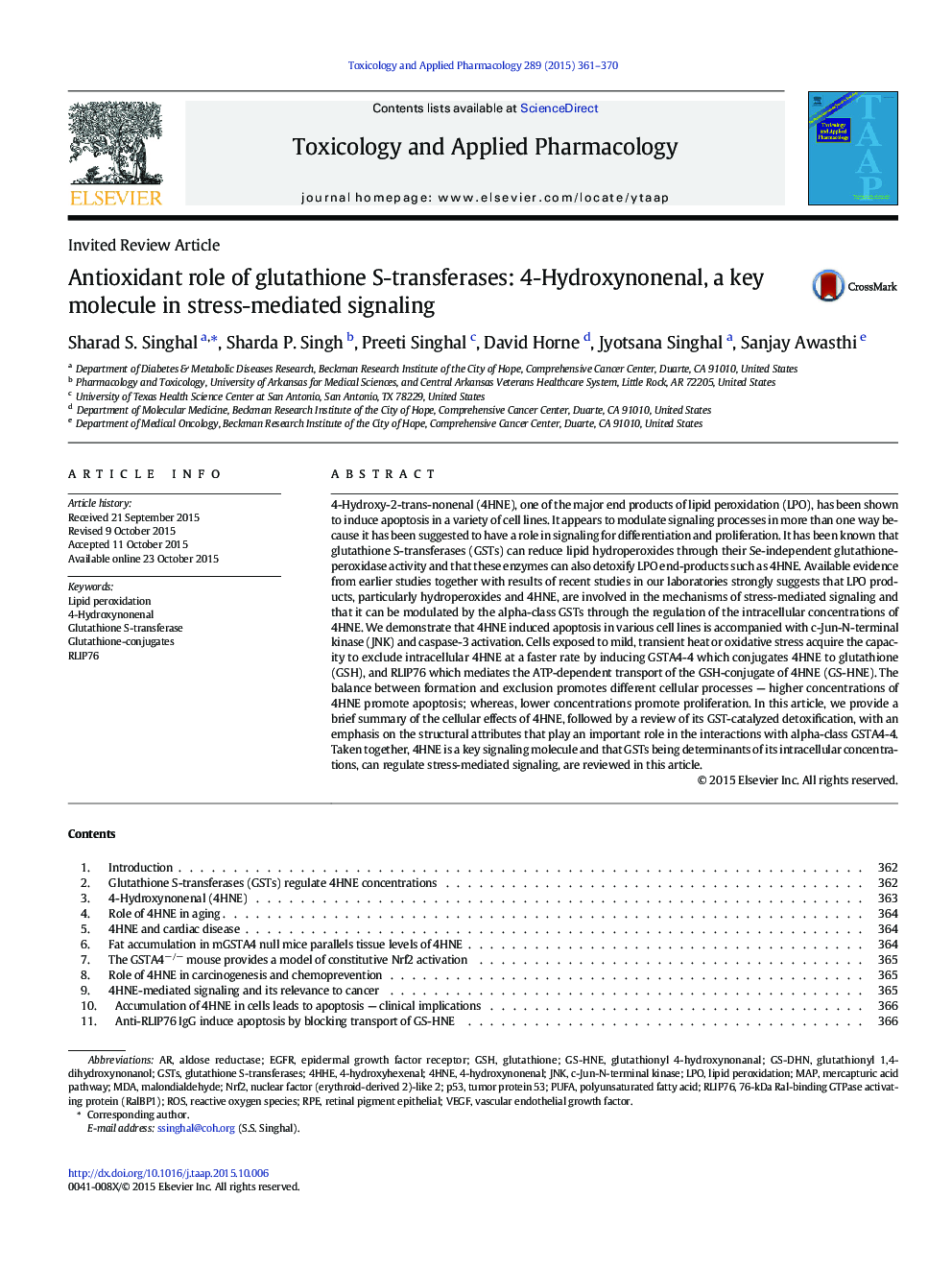| کد مقاله | کد نشریه | سال انتشار | مقاله انگلیسی | نسخه تمام متن |
|---|---|---|---|---|
| 2568269 | 1128431 | 2015 | 10 صفحه PDF | دانلود رایگان |

• GSTs are the major determinants of the intracellular concentration of 4HNE.
• Higher concentrations of 4HNE promote apoptosis whereas lower promote proliferation.
• Stress-mediated signaling can be modulated by the α-class glutathione S-transferase.
• Genotoxic effect of 4HNE may be ameliorated by modulating the cellular GSH levels.
• RLIP76 (RalBP1) mediates ATP-dependent transport of GSH-conjugate of 4HNE (GSHNE).
4-Hydroxy-2-trans-nonenal (4HNE), one of the major end products of lipid peroxidation (LPO), has been shown to induce apoptosis in a variety of cell lines. It appears to modulate signaling processes in more than one way because it has been suggested to have a role in signaling for differentiation and proliferation. It has been known that glutathione S-transferases (GSTs) can reduce lipid hydroperoxides through their Se-independent glutathione-peroxidase activity and that these enzymes can also detoxify LPO end-products such as 4HNE. Available evidence from earlier studies together with results of recent studies in our laboratories strongly suggests that LPO products, particularly hydroperoxides and 4HNE, are involved in the mechanisms of stress-mediated signaling and that it can be modulated by the alpha-class GSTs through the regulation of the intracellular concentrations of 4HNE. We demonstrate that 4HNE induced apoptosis in various cell lines is accompanied with c-Jun-N-terminal kinase (JNK) and caspase-3 activation. Cells exposed to mild, transient heat or oxidative stress acquire the capacity to exclude intracellular 4HNE at a faster rate by inducing GSTA4-4 which conjugates 4HNE to glutathione (GSH), and RLIP76 which mediates the ATP-dependent transport of the GSH-conjugate of 4HNE (GS-HNE). The balance between formation and exclusion promotes different cellular processes — higher concentrations of 4HNE promote apoptosis; whereas, lower concentrations promote proliferation. In this article, we provide a brief summary of the cellular effects of 4HNE, followed by a review of its GST-catalyzed detoxification, with an emphasis on the structural attributes that play an important role in the interactions with alpha-class GSTA4-4. Taken together, 4HNE is a key signaling molecule and that GSTs being determinants of its intracellular concentrations, can regulate stress-mediated signaling, are reviewed in this article.
Journal: Toxicology and Applied Pharmacology - Volume 289, Issue 3, 15 December 2015, Pages 361–370